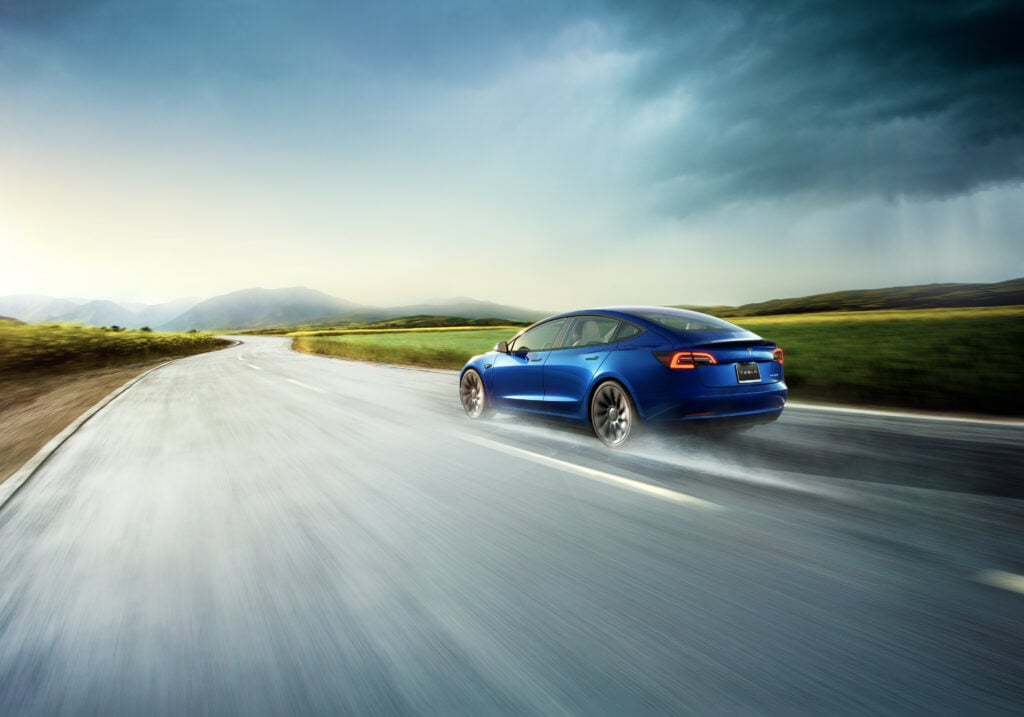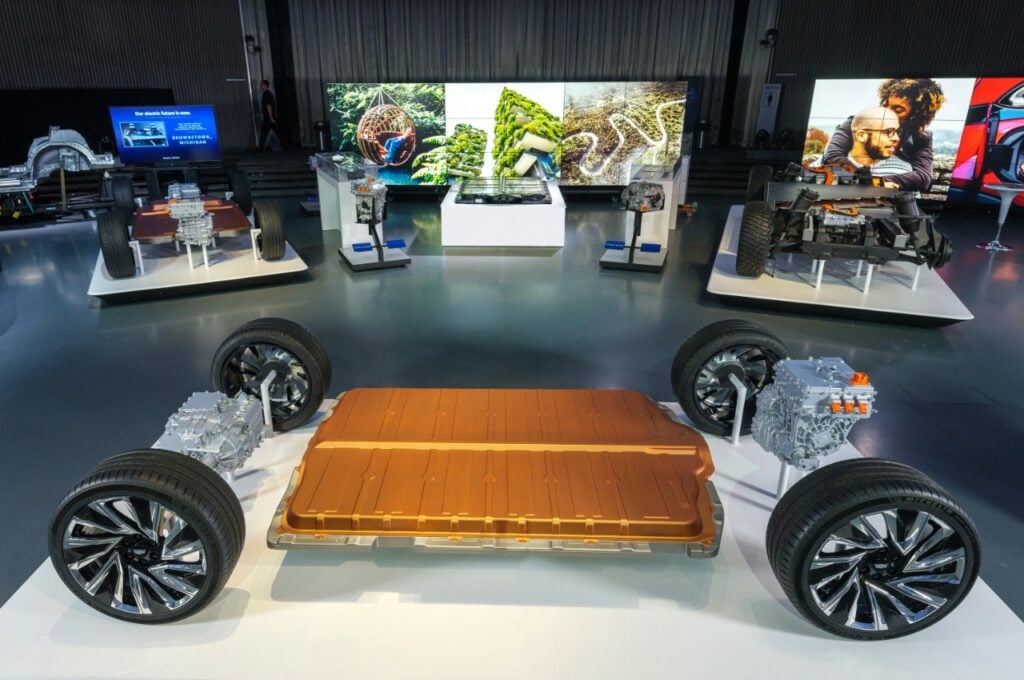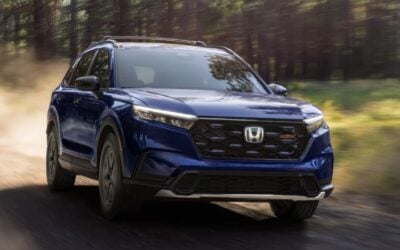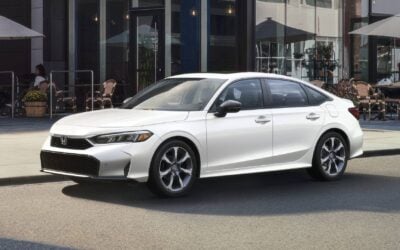
The EV Learning Curve: Why Is Range So Important?
As if anyone needed one more reason to be anxious, some of today’s electric vehicles have inspired a new kind of dread: range anxiety. If you’re new to the world of EVs, you may be wondering why electric vehicle range figures are compared and analyzed meticulously. Maybe you’re even skeptical of EVs because of the sub-300 mile ranges touted as the latest and greatest. The largest automakers are committed to electrification, and American drivers are finding that shopping for an EV is a different experience. There’s no doubt it takes some getting used to. Is the instant acceleration and cheaper fuel worth the learning curve that comes with EV adoption?
Electric vehicle charging stations are still few and far between in most of America. Even charging technologies vary widely from one vehicle to the next. A few new EVs are behind the times when it comes to charging speed, most notably the Chevy Bolt. Others, like the Hyundai IONIQ 5 and Porsche Taycan, are progressing forward with the fastest top-up times in the industry. Thankfully, charging an EV in America is about to get a lot easier in 2022. Billions of dollars in both private and public funding is being funneled into growing the nation’s public charging infrastructure over the next two years. EV range figures will likely become less defining for each new EV that hits the market as charging becomes quicker and easier to find.
As we enter 2022, range is still top of mind for consumers. But estimating EV range is not an exact science. Some vehicles regularly exceed EPA mileage ratings, but many others fall short of the advertised figures. Here’s what consumers need to know about real-world range in today’s growing EV market.
Factors That Affect Real-World Range

Speed is the number one factor that determines electric vehicle range. The relationship between city/highway driving and range is the opposite with an EV than you’ll find with a combustion-powered vehicle. With a traditional combustion vehicle, better gas mileage is achieved at highway speeds, usually between 50-70 miles per hour. That’s not so with EVs.
EVs are more efficient at lower speeds, even in stop-and-go traffic. Let’s consider the example of the best-selling Tesla Model Y. The 2022 Model Y’s combined range rating is 330 miles, or 125 mpg equivalent. A closer look at the city and highway figures tells an interesting story. On the highway, the US EPA calculates the Model Y’s fuel economy as 131 mpge. Real-world testing at 70 mph finds that the Model Y can make it about 275 miles on a charge. However, in city driving scenarios at lower speeds, the Model Y is good for an astounding 131 mpge, or over 350 miles of range. The story is the same for most other EVs: slower driving around town yields greater efficiency and more range.
Get the most when you sell your car.
Compare and choose multiple offers in minutes:
Why is speed such an important factor for electric vehicle range? It all comes down to something engineers can’t control, only accommodate: physics. At higher speeds, a vehicle encounters higher friction as it pushes through the air. Friction causes drag, and drag can only be overcome by more force. In this case, the additional force is supplied by higher power output from the electric motors. This is why EV stats often include the ‘drag coefficient’ along with horsepower, torque, curb weight and the rest of the usual metrics for comparison.
Weather Can Be a Blessing Or a Curse

Temperature, wind and even precipitation can all affect electric vehicle range, especially at higher speeds. Every battery-electric motor platform has an ideal operating temperature. Usually, the ideal temperature is somewhere near 70 degrees Fahrenheit. At the ideal temperature, the vehicle can attain up to 115% of its official rated range. That means a Ford Mustang Mach-E rated for 270 miles may actually make it over 300 miles on a single charge in perfect conditions.
Summer heat eats into range somewhat, but winter cold is the real range killer. Effects vary from one model to another, but it’s not uncommon for an EV to lose 30% of its range in freezing temperatures. Why? The cold itself is responsible for about 10% of the range loss, but it’s actually running the heater that demands so much energy, and range takes an even bigger hit. Winter weather is so problematic for EVs that many OEMs are installing heat pumps in their latest models in an effort to reduce range loss in the cold.
As long-haul truck drivers know well, a headwind or severe crosswind kills range for all vehicles, regardless of fuel type. An EV normally rated for 250 highway miles might not even make it 200 with a strong headwind. On the other hand, a tailwind can extend range far beyond the usual performance. Once again, this is similar to what drivers of combustion vehicles will experience.
Rain and snow also reduce range by adding to drag. Think of it this way: any vehicle, electric or otherwise, uses more fuel to literally push through the air as precipitation falls onto it.
Battery Wear Affects Electric Vehicle Range

All EVs lose rated range as they accumulate miles on the odometer. It’s just a part of battery wear and tear. The range loss is greatest as the vehicle is ‘broken in’ so to speak. Tesla vehicles lose about 5% of their range within the first 30,000 miles of driving, but range loss slows down afterward. There are many examples of Teslas with 200,000 miles on the odometer that continue to carry 90% of the original range, and almost all retain at least 85% by this point. Other EVs show similar range loss over time.
Battery degradation is unavoidable, but there are measures that EV drivers can take to minimize it. Limiting level 3 fast charging to only when necessary (such as road trips) is the biggest effort anyone can make to preserve the health of their battery. Charging at home on a level 1 or 2 charger to 80% or 90% state of charge is recommended for most EVs. Only when the extra mileage is needed should EVs be fully charged to 100%. One notable exception is the 2022 Tesla Model 3. Tesla has decided to put lithium-iron-phosphate (LFP) batteries in the standard range variants of the Model 3, making this the first EV on the market to withstand regular charging to 100% without notable battery degradation. Perhaps this was a factor in Hertz’s recent decision to buy 100,000 Model 3’s.
Does Electric Vehicle Range Make Road Trips Unreasonable?
With so many factors going into EV range, you might be wondering how one can reliably estimate the range of their EV in real time. Luckily, engineers saw the need for real-time range estimators and got ahead of this challenge. Today’s EVs include smart range estimators (that some affectionately call guess-o-meters) that factor in a number of variables to display the remaining range for the driver. Real-world range figures don’t necessarily make road trips challenging, but for the time being, it is something else for drivers to monitor while charging stations remain uncommon.
Popular EVs and Their Real-World Ranges
Curious as to how your favorite electric vehicles match up in real-world range? The EV experts over at InsideEVs have compiled a database of how every model they’ve tested firsthand performs in the real world. Some EV models far exceed their official EPA ratings, while others come up short. Below are a few of their more notable findings.
Source: InsideEVs
The Takeaway From CarEdge

Today’s EVs are expected to retain 85-90% of their original range after 100,000 miles, and possibly even over 200,000 miles. This normal range loss is due to battery wear after repeated charging and discharging cycles. Real world range is something for EV shoppers to bear in mind when comparing models. Remember: If an EV is EPA rated for 250 miles, it will likely only achieve 225 miles on a full charge after 100,000 miles of driving.
The data from InsideEVs shows that some automakers consistently underperform their ratings, while others exceed expectations. Will range anxiety turn buyers away, or will tech and sporty handling compel more drivers to think about going electric? Let us know your thoughts in the comments below. We’ll continue to keep you informed as electrification overtakes the auto industry.













0 Comments